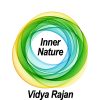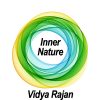Inner Nature: A chat with ChatGPT about bioelectricity

By Vidya Rajan, Columnist, The Times
The power of a good story is that has sound grounding in fact, but also pushes the boundary of belief. Is it too much to imagine that our world will be un-livable soon due to the effects of climate change? Will watching the movie The Day After Tomorrow change your mind? Will watching GAATACA sensitize you to the possible outcomes of human genetic engineering? Will...
Inner Nature: Beekeeping in Ukraine

By Vidya Rajan, Columnist, The Times
“History is all explained by geography.” Robert Penn Warren, novelist and poet (24 Apr 1905-1989)
In this article, I want to pay homage to Ukraine’s beekeepers and beekeeping in light of the many wars that have washed over this beleaguered land. With a land area only slightly smaller than the state of Texas, it lies at many junctions: between Europe...
Inner Nature: Palynology

By Vidya Rajan, Columnist, The Times
Palynology is the study of tiny particles such as pollen, spores, dust and soil particles, microfossils, and other miniature items that are carried as inclusions in macro items such as rock layers, soil on a shoe, paint on a wall, and foodstuffs such as honey. The presence of pollen in honey provides a clue to the flowers from which bees obtain nectar, and is a...
Inner Nature: Invertebrate mouths

By Vidya Rajan, Columnist, The Times
I have always been fascinated by mouths and the teeth and tongues that lie inside them. Mouths are both structurally amazing and functionally diverse. We eat with our mouths, use it to communicate with sounds, express emotions, and also with breathing functions. Mouths contain tongues, one of the softest, strongest, and most sensitive muscles in our body, but they...
Inner Nature: Gender and Stereotypes

By Vidya Rajan, Columnist, The Times
Human behavior is not completely governed by biological sex. People experience a remarkable natural degree of behavioral freedom which, however, is held in check by the expectations of society. Without comparable societal structures, to what degree do other animal species experience sex-based roles? Are sex-based roles in nature invariable, interchangeable, or nonexistent?
To...
Inner Nature: Feats of strength

By Vidya Rajan, Columnist, The Times
As the weather warms, we watch bees collecting and hauling fat baskets of pollen back to their hives. Bumblebees, with their improbably large bodies hover on whirring, buzzing wings that seem barely adequate to the purpose of elevating, never mind transporting their bulk. Ants swarm kitchen counters and picnics and carry away remarkably large portions of bounty...
Inner Nature: Sodium and Potassium — The Yin and the Yang

By Vidya Rajan, Columnist, The Times
In previous articles, I have examined the various roles that oxygen and iron play in living organisms. These elements are linked in an energy-cycling relationship – iron moves oxygen and electrons around the body, as well as around the inside of the cell itself to harvest energy from food [1]. In this article, I will examine another dynamic relationship: that...
Inner Nature — Fe: An Iron Constitution

By Vidya Rajan, Columnist, The Times
There are 92 naturally occurring elements in the periodic table, but only a handful of elements are essential to life. They include hydrogen, oxygen, carbon, and nitrogen in large quantities, moderate amounts of iron, magnesium, sodium, potassium, phosphorus and sulfur, and miniscule quantities of “micronutrients” like selenium and zinc. Why? In an intermittent...
Inner Nature: Chocolate — food or poison?

By Vidja Rajan, Columnist, The Times
Easter, with its egg hunts and chocolate eggs, is past. With the current school closures and social distancing, the kids are bouncing off the walls already, and don’t need any further stimulation. It’s time to get rid of the chocolate. But the reliable excess food disposal unit, aka Man’s Best Friend, is forbidden from gormandizing Godivas.
Why so?
In this...
Inner Nature: COVID-19 and what you need to know

By Vidya Rajan, Columnist, The Times
News of the novel coronavirus outbreak has exposed our vulnerability to two things: fear and contagion. I have had conversations with people, admittedly not science-aware types, who think that countries should be providing antibiotics prophylactically, or frustrated a vaccine is taking so long to make. I have heard people conflating the virus that causes COVID-19,...



